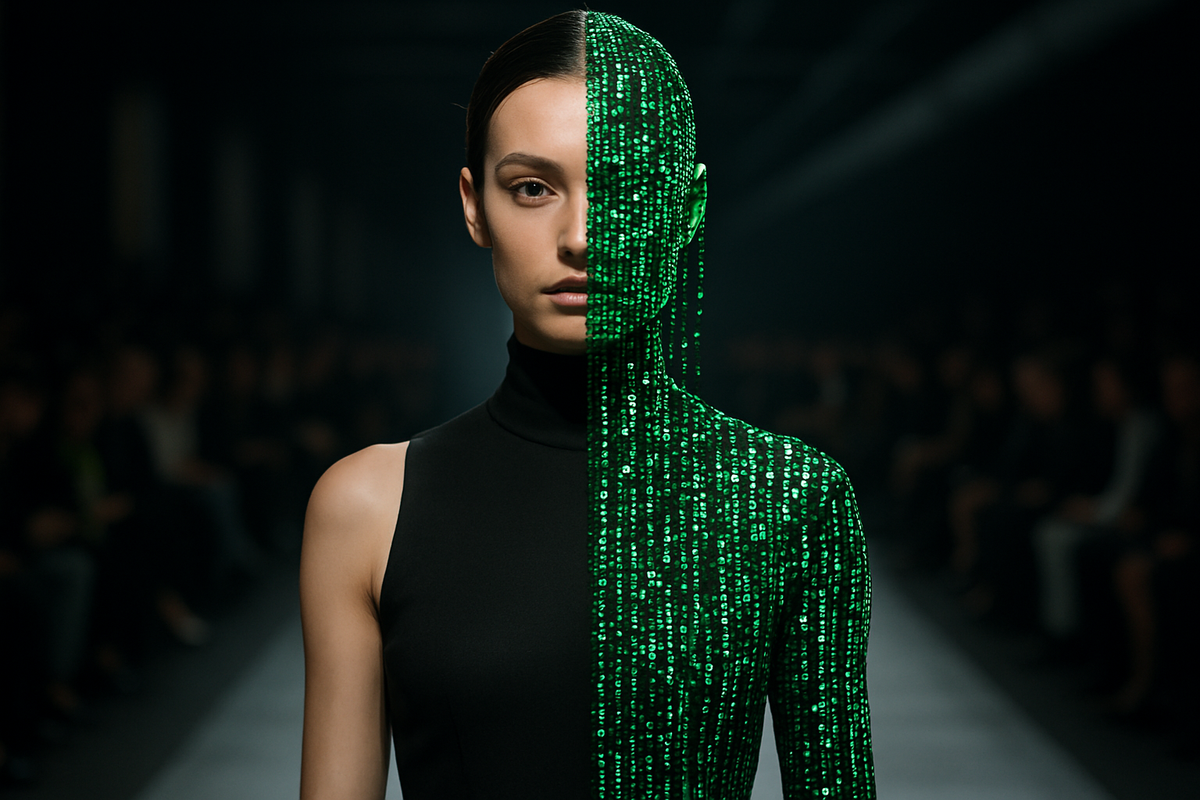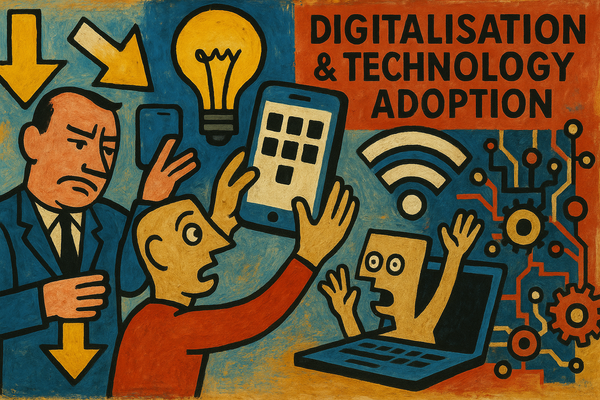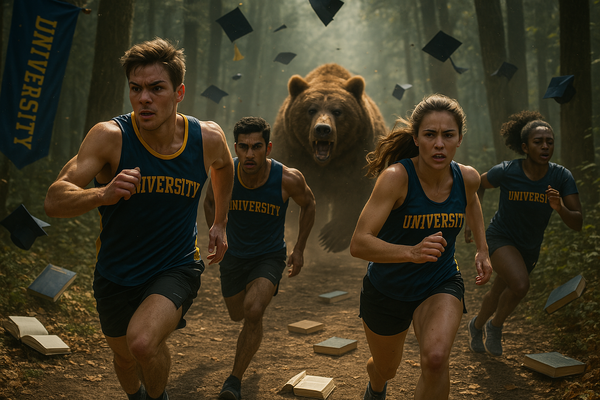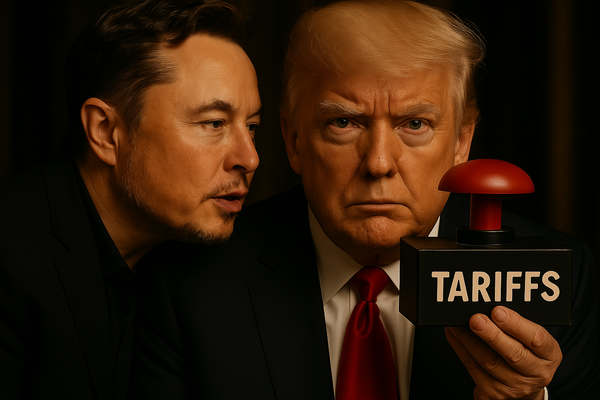The Rise of AI-Generated Models in Fashion
AI-generated models like Lil Miquela and Shudu are redefining fashion marketing. Discover how brands like H&M are embracing digital twins, the benefits they offer, and the ethical questions they raise about authenticity and diversity.

In an industry defined by change, fashion has always been quick to adapt to new technologies. From e-commerce to virtual try-ons, the sector has consistently embraced innovation to stay ahead of consumer expectations. Now, as artificial intelligence continues its rapid evolution, we’re witnessing one of the most intriguing transformations yet: the emergence of AI-generated digital models, also known as “digital twins.” These hyper-realistic, computer-generated figures are not only fronting advertising campaigns for brands like H&M and Balmain but are also reshaping how fashion is marketed, consumed, and understood (Teen Vogue, 2025; Business of Fashion, 2025).
This blog delves into the rise of these digital entities, exploring how brands are leveraging them, the strategic benefits they offer, and the complex ethical terrain they raise.
The Emergence of AI-Generated Models
AI-generated digital models are virtual personas created using advanced artificial intelligence, computer vision, and 3D modeling. They can be designed to represent anyone—from stylized fantasy figures to photo-realistic humans—and can perform in roles traditionally filled by human models: walking runways, posing in editorial shoots, and even “interacting” on social media (Li, 2023).
Some of the most notable examples include Lil Miquela, a virtual influencer with millions of followers who operates like a real social media personality (Elyamany et al., 2025), and Shudu, dubbed the world’s first digital supermodel, created by photographer Cameron-James Wilson (Jackson, 2018). These figures are not merely novelties; they are carefully curated brand assets, capable of maintaining consistency across campaigns and digital platforms.
Strategic Benefits for Fashion Brands
1. Cost Efficiency and Creative Control: Producing a campaign with human models involves significant overheads—from talent and location to lighting, catering, and post-production. Digital models offer a more efficient and scalable alternative, allowing marketers to create and iterate campaigns quickly and with precise control over aesthetic and brand alignment (Dawar & Gupta, 2024).
2. Sustainability and Waste Reduction: Using digital avatars can drastically cut down on the environmental costs associated with travel, physical samples, and large-scale productions. In a climate-conscious market, AI-driven marketing solutions are becoming part of broader sustainability strategies Abid, H. et al. (2022).
3. Speed-to-Market and Scalability: AI models allow fashion brands to respond to trends in real-time. With virtual photoshoots and digital assets, new products can be marketed almost immediately upon design finalisation—an agility that’s critical in fast fashion (Dawar & Gupta, 2024).
Enhancing Consumer Engagement
1. Immersive Experiences: Virtual models are central to delivering AR and VR experiences that enhance the shopping journey. They’re used in virtual try-on tools, allowing customers to see how garments fit various body types in real-time (Fashion and Textiles, 2023).
2. Personalization and Social Media Synergy: AI avatars can be programmed to reflect local style preferences and demographics, offering brands a hyper-targeted approach to audience engagement. Virtual influencers like Lil Miquela have developed rich backstories and interactive personas, which foster community and brand loyalty among followers (Bitencourt et al., 2024).
3. Case in Point: H&M’s Digital Models: H&M recently launched campaigns featuring AI-generated “digital twins” of their models. The company positioned this move as a way to expand creative possibilities and reduce environmental impact, while also acknowledging potential concerns regarding authenticity and representation (Teen Vogue, 2025; Business of Fashion, 2025).
Ethical Considerations and Cultural Impact
1. Representation and Diversity: One of the potential benefits of digital models is their ability to reflect greater diversity in terms of race, body type, and gender identity. However, critics argue that merely programming diversity does not replace real representation—particularly when the creators of these avatars do not share the identities being depicted (Jackson, 2018; Sousa, 2023).
2. Authenticity and Trust: As AI-generated personas become more lifelike, transparency is essential. Studies suggest that audiences can feel misled when they discover that influencers they’ve followed are not human (Elyamany et al., 2025). Clear labeling and responsible disclosure practices may soon become the norm, especially with increasing regulatory scrutiny.
3. Labor and Displacement: While digital models open up new creative roles in 3D design and AI content creation, they also threaten traditional modelling and creative jobs. According to Li (2023), some virtual influencers rely on stand-in performers and labor from human models who receive little credit—highlighting new forms of digital labor exploitation.
The Future of Fashion Marketing
Rather than replacing human models, AI-generated avatars are likely to complement them, forming hybrid campaigns that balance innovation with emotional authenticity. The future of fashion marketing will be shaped by how ethically and creatively brands embrace this technology.
With growing consumer demand for both transparency and digital innovation, companies must find a way to humanise their virtual presence—bridging the gap between algorithm and artistry (Abid, H. et al., 2022; Fashion and Textiles, 2023).
The rise of AI-generated digital models marks a pivotal moment in the evolution of fashion marketing. Brands like H&M are setting the tone for a future where efficiency, personalisation, and creativity are increasingly powered by algorithms. Yet, this shift also demands a new kind of responsibility—one rooted in authenticity, diversity, and ethical innovation.
As we continue to navigate this digital transformation, success will lie not just in technological adoption, but in how meaningfully brands engage with the people behind the pixels.
References
Abid, H. et al. (2022) Artificial intelligence (AI) applications for marketing: A literature-based study. International Journal of Intelligent Networks, 3, 119-132.
Bitencourt, E., Castelhano, G. & Lopes, C., 2024. Celebrity 2.0: Lil Miquela and the rise of a virtual star system. [online] ResearchGate. Available at: https://www.researchgate.net/publication/344791173
Business of Fashion, 2025. H&M Knows Its AI Models Will Be Controversial. [online] Available at: https://www.businessoffashion.com/articles/technology/hm-plans-to-use-ai-models
Dawar, R. & Gupta, A. 2024. The Rise of AI In the Fashion Industry. Conference: Metaverse, Fashion Design and Sustainable Fashion. Available at: https://www.researchgate.net/publication/385242729
Elyamany, N., Youssef, Y.O. & El-Karef, N., 2025. A trans-disciplinary forensic study of Lil Miquela’s virtual identity performance on Instagram. [online] SpringerLink. Available at: https://link.springer.com/article/10.1007/s00146-025-02219-8
Fashion and Textiles, 2023. Issues of virtual fashion influencers’ reproduced bodies: a qualitative analysis based on body discourse. [online] Available at: https://fashionandtextiles.springeropen.com/articles/10.1186/s40691-023-00349-5
Jackson, L.M., 2018. Shudu Gram Is a White Man’s Digital Projection of Real-Life Black Womanhood. [online] The New Yorker. Available at: https://www.newyorker.com/culture/culture-desk/shudu-gram-is-a-white-mans-digital-projection-of-real-life-black-womanhood
Li, J., 2023. Shudu and Her ‘Muses’: Stand-in Labor in Virtual Influencer Production. [online] Flow Journal. Available at: https://www.flowjournal.org/2023/03/shudu-and-her-muses/
Sousa, M., 2023. Unveiling the Dangers of Feminized Virtual Avatars in Fashion. [online] DiVA Portal. Available at: https://www.diva-portal.org/smash/get/diva2%3A1773932/FULLTEXT01.pdf
Teen Vogue, 2025. H&M Is Tapping AI Models. Here’s Why It Could Be Problematic. [online] Available at: https://www.teenvogue.com/story/hm-is-tapping-ai-models-heres-why-it-could-be-problematic




